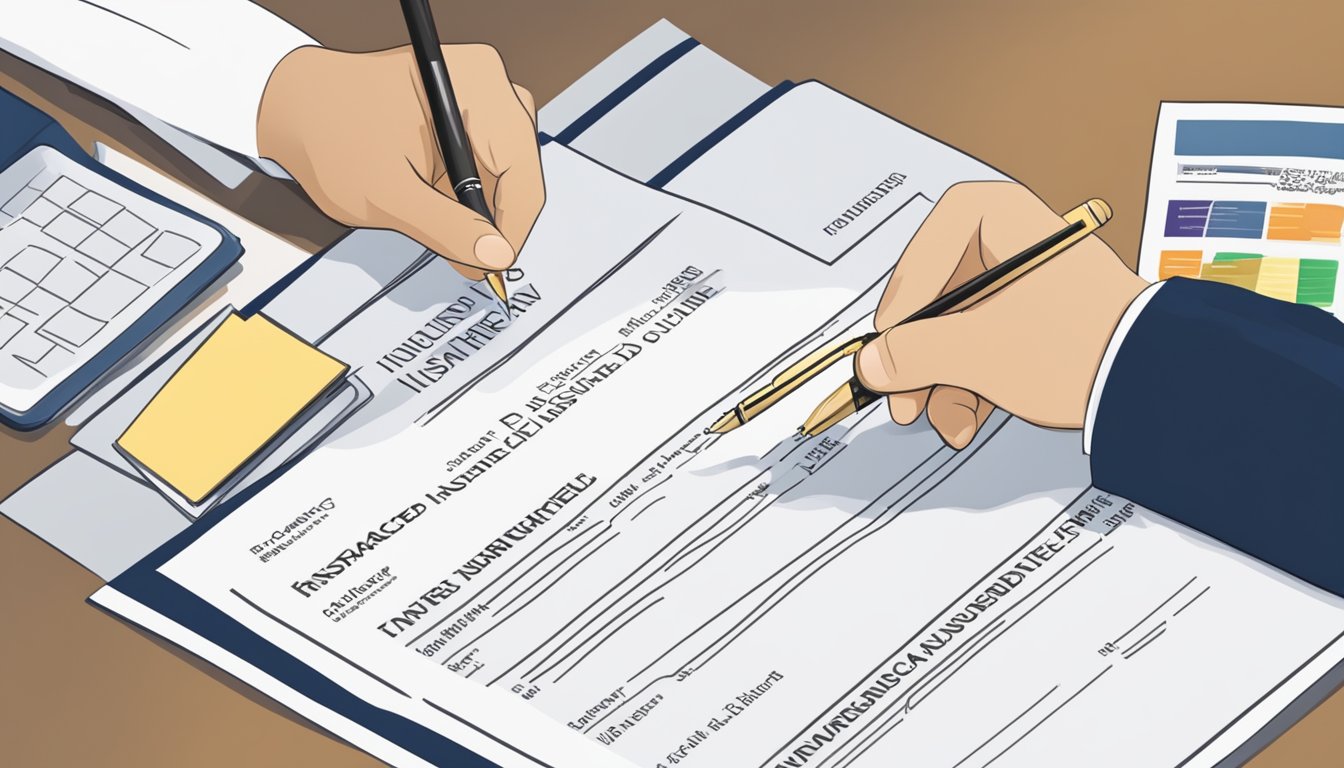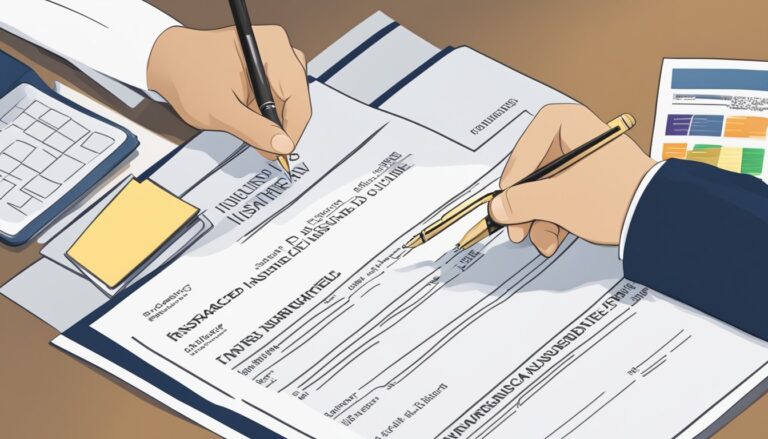Understanding Insurance Terms
Insurance Policy: This is a contract between you and an insurer.
It outlines the terms, coverage, and exclusions.
Insured: The person or entity covered by an insurance policy.
Named Insured: The individual or business explicitly named in the policy.
They benefit from the full protection of the policy.
Additional Insured: Persons or entities added to the policy for specific coverage.
They do not have the same full protection as the named insured.
Additional Named Insured: This involves naming more than one person or entity in the policy.
Each is fully protected under the policy’s terms.
First Named Insured: This individual has additional responsibilities and rights.
This may include paying premiums and receiving correspondence from the insurer.
Insurable Interest: This is a legitimate interest in the insured item or person, motivating its insurance.
For example, homeowners have an insurable interest in their house.
Example Coverage Details
| Term | Definition |
|---|---|
| Insurance Policy | Contract outlining terms, coverage, and exclusions. |
| Named Insured | Specifically named and fully covered person or entity. |
| Additional Insured | Covered under certain conditions, but not fully protected. |
| Insurance Policy | Outlines terms, coverage, and exclusions. |
| Insurable Interest | Legitimate interest requiring insurance. |
In the insurance industry, understanding these terms is crucial for choosing the right policy.
For instance, car insurance may refer to an automobile policy that protects you and others you add as additional insureds.
Insurance Policy Practicalities
Managing your insurance policy effectively involves understanding the lifecycle of a policy and the different types of coverage available.
This section provides insights into these two critical areas.
The Policy Lifecycle
The lifecycle of an insurance policy starts when you choose a policy and purchase it.
You work with an insurance agent to find the right coverage.
Once purchased, you receive a declarations page that outlines the details like the policyholder’s name, coverage limits, and premiums.
Paying premiums on time is crucial to keep your policy active.
If changes are needed, endorsements can be added to update the policy without canceling it.
Policies also have a renewal date, typically every six or twelve months.
At renewal, both the insurer and the policyholder can decide to adjust coverage or make changes.
Sometimes, policies can face nonrenewal, meaning the insurer will not offer to renew the policy.
Types of Coverage
There are various types of coverage available depending on your needs. Auto insurance covers liability for accidents, damage to the car, and personal injury. Home insurance usually includes personal property protection as well as coverage for fire and flood insurance.
Some policies are designed for specific needs, like liability insurance for personal or business use.
These provide coverage against legal claims for injuries or damages.
For home insurance, different types of endorsements can be added to cover items or situations not included in the default policy.
It’s essential to understand the specifics of each coverage to ensure your policy meets your requirements and protects your assets effectively.
Insurance and Legal Liability

When dealing with insurance, understanding liability is crucial.
Liability refers to the legal responsibility you have if someone suffers a loss or injury due to your actions.
This applies to both personal and business contexts.
In an insurance policy, the policyholder is the person or entity that purchases the policy.
This can be an individual, a family member, a firm, or an organization.
The policyholder is often the named insured and has specific roles and responsibilities.
The named insured has the authority to make changes to the policy, such as adjusting coverage or adding other insureds.
They can also cancel the policy if needed.
This includes companies where a partner or co-owner might hold the majority interest.
There are different types of insureds in a policy. Insureds could include employees or members of the organization who are covered but not listed by name.
Their coverage is based on their connection to the named insured.
Dependents, like family members, can also be considered insureds under certain policies.
Understanding the structure of liability insurance helps you manage risks better.
Liability policies can cover you against various claims, like those for property damage or bodily injury.
For high-risk scenarios, you might consider special coverage like an umbrella liability policy.
This provides additional protection beyond the primary policy limits.
Effective risk management involves recognizing your potential liabilities and ensuring you have appropriate coverage.
This way, you protect yourself and your interests legally and financially.






